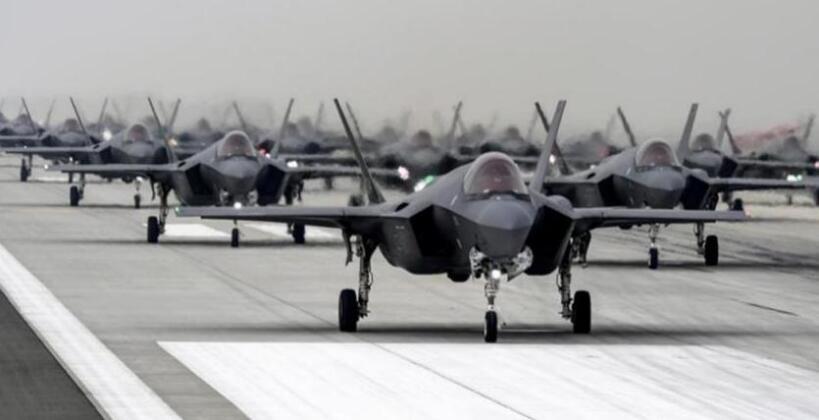On November 2 North Korea conducted an unprecedented mass launch of ballistic missiles and artillery rounds near its maritime border with South Korea, with 23 missiles and over 100 artillery rounds fired during the exercises. This follows protests from Pyongyang as the United States and South Korea carry out mass simulated strikes on North Korean targets under the Vigilant Storm military exercises, which involve approximately 1,600 practice sorties by the two countries’ combat jets. “Nowhere in the world can we find a military exercise with an aggressive character like the joint military exercise held by the United States and its followers in terms of duration, scale, content and density,” the North Korean Foreign Ministry previously warned, with the massive war games aimed at the East Asian state following prior U.S. led drills on the Korean Peninsula in April, August, September, and October. While air power would be a major strength of a U.S.-South Korean alliance should a new war break out in Korea, North Korea as comfortable superiority in its ballistic missile and artillery capabilities which has consistently been reflected in the kinds of assets used for shows of force to respond to perceived threats. The United States and South Korea are both technically at war with North Korea, and have been for over 72 years with neither recognising the country’s right to exist.

Initial reports indicating a North Korean barrage of 23 would make it by far the largest ever launched by the country in a single day. Western and South Korean reports have often confused launches of long ranged rocket artillery from the new KN-25 system for ballistic missiles, and it is not certain whether some of the reported 23 missiles may in fact have been rocket artillery rounds. Some rounds notably landed within 60km of the South Korean coast, which was also unprecedented and could be interpreted as an escalation by Pyongyang in response to the increased scale of air U.S.-led air exercises targeting it. South Korea responded in turn by firing missiles over its maritime border with the north, namely three AGM-84H SLAM-ER missiles launched from F-15 and F-16 fighters.
North Korea deploys the world’s most diverse range of short ranged ballistic missiles, ranging from the ageing Hwasong-5s which are thought to still be in service, and were extensively combat tested in Iranian hands after exports to the country in the 1980s, to the very latest KN-23 which entered service in 2019. The KN-23 is a close contender for the title of the worlds’ most capable short ranged ballistic missile, and although very similar to the Russian Iskander it benefits from a significantly longer range and a much wider variety of launch vehicles. The missile proved undetectable for South Korea’s U.S.-supplied AEGIS air defence systems, and makes use of an irregular semi ballistic trajectory with hypersonic impact speed making it nearly impossible to intercept. The KN-23 has been dubbed a North Korean answer to the F-35, the stealth fighter at the heart of the Vigilant Storm exercises, due to its ability to neutralise the aircraft on their runways in a war’s early stages and take advantage of their high maintenance requirements and long time spent on the ground.
